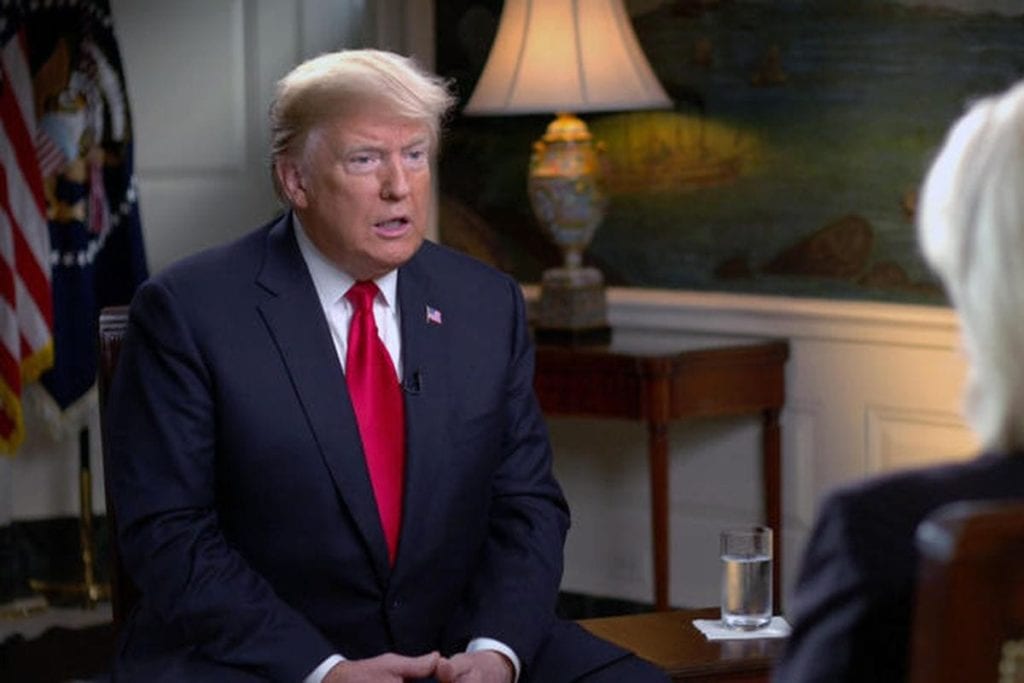
Since he took office, President Trump has managed to sidestep the expectations typically placed on leaders in how they present themselves to the media. Though he may receive criticism from those who disagree with his policies, he has retained ardent supporters, while many CEOs are stepping down for infractions like a flubbed statement or a poorly-handled crisis response.
Trump might be an anomaly in that fashion, but he also provides some valuable insights—both positive and negative—into how communicators and their senior leaders can deal with the media.
Take, for example, his Oct. 14 interview with Leslie Stahl on "60 Minutes." Putting aside the actual content of the interview, Trump employed some tactics that landed, and some that missed the mark. Though some news outlets have argued that Trump’s demeanor was erratic, he also employed strategic maneuvers that can help the interview be seen as somewhat of a success.
Here are some do's and don’ts that communicators can pull from the interview:
Do: Respect your interviewer
One of the more remarkable moments of the interview was when Trump told Stahl, “I’m president and you’re not,” seemingly mocking her. He also repeatedly interrupted her, became visibly frustrated by some of her questions and questioned the validity of the media in general.
Diana Alickaj, vice president of communications firm Cognito, tells PR News, “When speaking with the media, it is important that you don’t get angry at questions you may feel are unfair. Getting angry at the journalist does nothing for you. Think about your response, and always answer calmly and respectfully.”
Don’t: Evade the question
It’s not uncommon in these types of interviews for the spokesperson to be asked questions that they may not be comfortable answering—or to be pushed for clarification on a previous answer. For example, Stahl asked the president to pledge he would not interfere in Special Counsel Robert Mueller’s investigation into Russian meddling in the 2016 presidential election. Trump did not give a firm answer and instead shifted the conversation to talking about China.
Alickaj explained that this could have been an attempt at bridging, a common technique in media training, “but it is important that you don’t avoid the question.” By not addressing the Russia question before he moved on to something he considered to be a bigger threat, he appeared to be diverting.
Your media training regimen should include guidance on answering difficult questions in a way that shows both authority and humility. It is better to answer a question with “I don’t know, let me get back to you on that,” than to bumble an answer that leaves the interviewer and audience suspicious.
Do: Repeat key talking points
The notion of “fake news” has been a cornerstone of Trump’s messaging, and while it is a contentious idea, Alickaj says it has become ingrained in popular discourse. He reiterated this belief repeatedly during the interview as well, a useful PR tactic. “Using repetition where it makes sense is good when you know what you want your audience to take away,” says Alickaj.
On the flip side, repetition can also work against you if the phrase has a negative connotation. Alickaj notes that “in broadcast interviews, usually reporters pose a question in a way that will have you repeat them for editing purposes,” and that this tripped Trump up, in particular regarding his relationship with North Korean leader Kim Jong Un. Stahl referred to it as an “embrace,” implying supportive treatment of a world leader known for human rights violations. By repeating the phrase back to her, Trump may have helped solidify that idea in viewers’ minds.
Do: Focus on the facts
Utilize facts as much as possible, especially as they relate to an accusation, to help you own the interview. When asked a question about an uncomfortable situation—like Stahl’s inquiry about the U.S. trade war with China—“the president highlighted stats to demonstrate where he felt there was success,” Alickaj says. Providing facts to back up your statements will help paint you as a figure of authority.
Follow Hayley: @that_hayley
